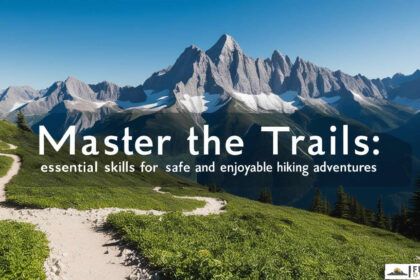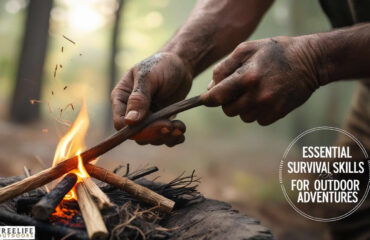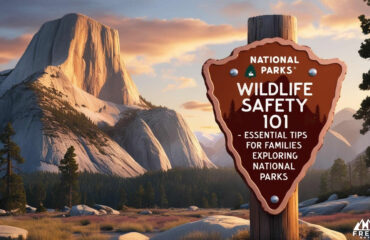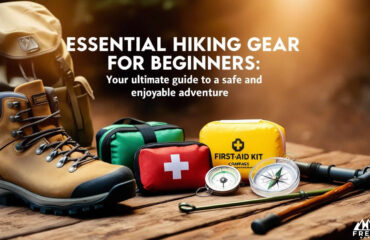
Discover essential skills for safe hiking adventures, from navigation and first aid to gear preparation and wildlife etiquette.
Understanding the Importance of Essential Hiking Skills
Hiking is a popular outdoor activity that offers both enjoyment and exercise, but it comes with inherent risks that can be mitigated through essential skills and preparation. Possessing these skills not only ensures safety but also enhances the overall hiking experience. For instance, understanding how to navigate using a map and compass can prevent hikers from getting lost in unfamiliar terrain, which is crucial for both enjoyment and safety.
When hikers are well-prepared, the likelihood of accidents decreases significantly. Continuous skill development is vital, as even experienced hikers can benefit from refreshing their knowledge of navigation, first aid, and wilderness etiquette. This ongoing learning process can help all hikers, regardless of skill level, to appreciate nature safely and confidently.
Navigation Skills
Navigation is a critical skill for any hiker, as it allows individuals to traverse trails without getting lost. Learning to read topographic maps is essential for understanding terrain features and elevation changes. For example, recognizing contour lines helps hikers assess trail steepness and plan their energy expenditure accordingly. A compass is another indispensable tool, especially in remote areas where GPS signals might fail.
Practicing navigation in familiar areas can build confidence and prepare hikers for more challenging excursions. Utilizing waypoints on a map assists in tracking progress and staying on course, while familiarizing oneself with local landmarks can provide additional reference points during hikes. Mastering these navigation skills can make a significant difference in ensuring a safe and enjoyable hiking experience.
Safety and First Aid
Safety on the trail is paramount, and carrying a well-stocked first aid kit is an essential aspect of preparedness. A typical kit should include items for treating blisters and cuts, as well as supplies for recognizing symptoms of hypothermia and heatstroke. For instance, knowing how to apply bandages or splints can be crucial in case of an injury. Taking a first aid class can also enhance a hiker’s preparedness for emergencies.
In addition to having a first aid kit, it is essential to recognize the signs of dehydration and heat exhaustion during hikes. Staying hydrated and understanding the symptoms of these conditions can prevent serious health issues. Carrying a personal locator beacon (PLB) can be a lifesaver in emergencies that require immediate assistance, making it a valuable addition to any hiking gear.
Planning and Preparation
Before embarking on a hike, it is vital to assess personal experience and physical fitness to select appropriate trails. Checking park websites for trail conditions and closures can also help inform a hiker’s plan. For instance, if a hiker is not comfortable with steep terrain, they should choose a flatter trail instead. Packing enough food and water is equally important; a general guideline is to carry about half a liter of water per hour of hiking.
Creating a detailed itinerary that includes start and end times, estimated travel speeds, and planned rest breaks can enhance safety. Additionally, making a checklist of necessary gear can prevent forgetting essential items. Informing someone about hiking plans, including expected return times, is crucial for ensuring safety in case of emergencies.
Weather Awareness
Weather can change rapidly in outdoor environments, making awareness essential for safe hiking. Checking forecasts before setting out can help hikers prepare for sudden changes. Recognizing signs of shifting weather—such as drops in temperature or sudden gusts of wind—can also ensure safety. For example, dressed in moisture-wicking layers and packing rain gear can help hikers adapt to varying conditions.
Understanding local weather patterns is equally important; in mountainous areas, afternoon thunderstorms can pose a significant risk. Additionally, hikers should be mindful of how altitude can affect weather conditions, particularly at higher elevations where temperatures can drop unexpectedly. Carrying a portable weather radio or app can provide valuable updates while on the trail.
Wildlife Etiquette
Practicing wildlife etiquette is crucial for both hikers and animals alike. Observing wildlife from a distance and never feeding animals can prevent dangerous encounters. For example, using binoculars for wildlife viewing allows hikers to appreciate nature without getting too close. Proper food storage, such as using bear-proof containers or hanging food, helps keep wildlife at bay and minimizes the likelihood of animal interactions.
Hikers should also yield to uphill hikers on narrow trails and adhere to the principles of Leave No Trace to minimize human impact on nature. Educating oneself about local wildlife, including common species and how to react if encountered, is vital for ensuring safety and respect for nature. Respecting wildlife habitats and avoiding nesting or breeding areas further supports the preservation of these ecosystems.
Essential Gear and Equipment
Having the right gear is fundamental to a successful hiking adventure. Appropriate footwear is crucial; shoes or boots should provide traction, support, and protection during hikes. Essential gear includes a map and compass for navigation, even if GPS devices are in use. Additionally, carrying a lightweight emergency shelter, like a space blanket, can protect against unexpected weather conditions.
Investing in high-quality hiking poles can aid stability and reduce strain on joints, particularly during challenging terrain. A multi-tool or knife is also recommended for various tasks, from gear repair to food preparation. Furthermore, ensuring a reliable flashlight or headlamp, along with extra batteries, is essential for visibility during low-light situations.
Communication and Signaling
Effective communication about hiking plans is vital for safety, especially in emergencies. Informing a reliable person of your itinerary, including start and expected return times, enhances preparedness. Additionally, carrying a whistle can be more effective than shouting for help over long distances. Learning three distress signals can also be crucial for attracting attention if lost.
Having a fully charged cell phone can serve as a valuable means of communication and GPS navigation, but hikers should familiarize themselves with local emergency services and their response times in the area. Practicing signaling techniques, such as using reflective materials or mirrors, can increase visibility and improve the chances of being found in an emergency.
Recap of Essential Skills for Safe Hiking Adventures
Mastering essential hiking skills and preparation is key to ensuring safe and enjoyable hiking adventures. From navigation and first aid to understanding weather patterns and wildlife etiquette, these skills contribute to a rewarding outdoor experience. Hikers are encouraged to apply these skills and continuously seek opportunities to learn and practice, enhancing their safety and enjoyment while exploring the great outdoors.




